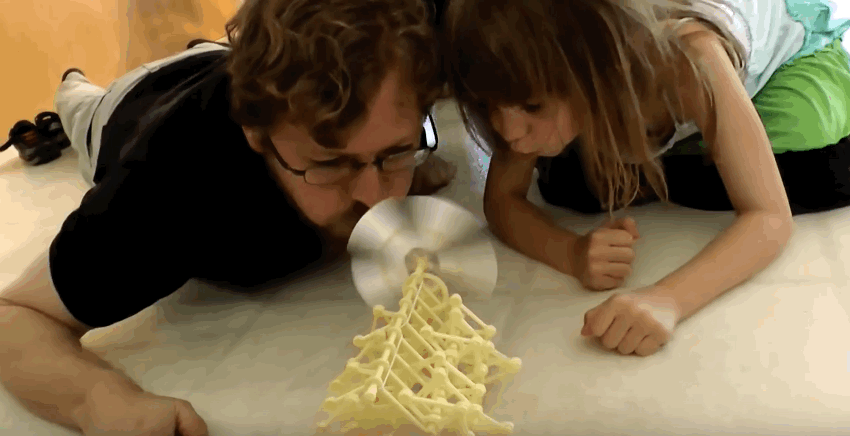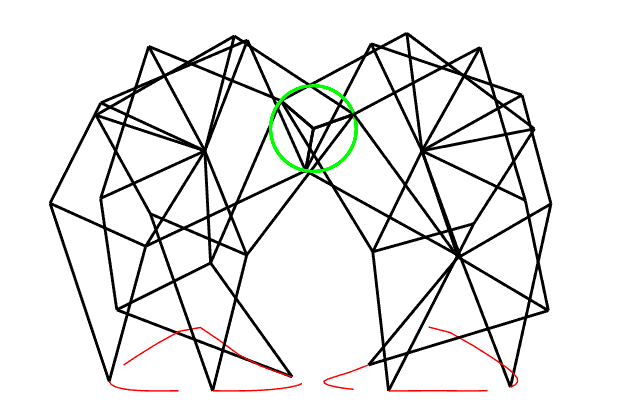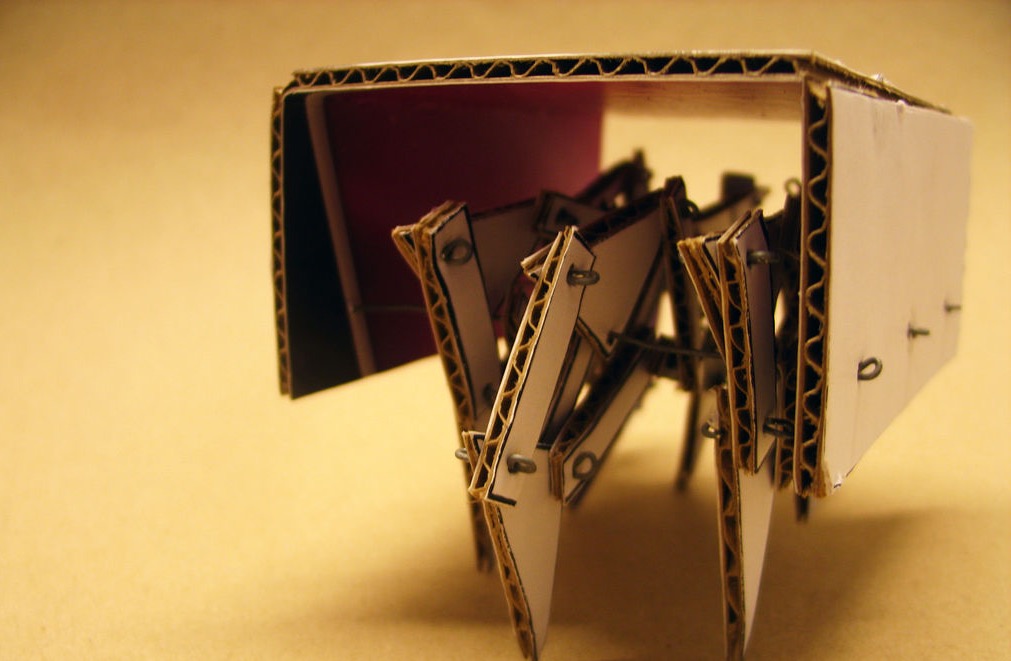The DIY kinetic art of Theo Jansen’s x-legged beasts
Published 16 February 2016 by Nicolas Barrial
Theo Jansen has become famous for his wind-powered millipede creatures made from recycled plastic. Without reproducing the master’s giant proportions, several DIY models celebrate this art of movement. Review.
His “beach creatures” have been proliferating on the coasts since 1990. Dutch physicist artist Theo Jansen has taken kinetic art out of the galleries to breathe life into odd beasts, made of intricate gears that leverage the wind with highly refined mechanics. With an insect’s delicate crawl, the Strandbeests, made of plastic bottles and waste, develop extraordinary mechanical properties. Jansen took inspiration from theories of evolution when he designed his bestiary. His Animaris ambulate across several beaches around the world, as long as the environment is windy, make stops in museums, as at Palais de Tokyo in 2015 and currently in Chicago. Makers and lovers of this eminently DIY art have been inspired to create their own models, perhaps on a smaller scale, but just as mobile.
Animaris “Beach session” (2013), Theo Jansen:
The rustic elements of fabrication, PVC tubing, sails, plastic bottles, are ideal for making things from scratch. But before tackling your own Jansen-inspired wind creature, it’s necessary to understand the mechanism behind the legs of the beast, in order to make the best choice of energy, and therefore, motion power.

Legs: fixed figure
Jansen’s beach creatures owe their natural gait to the artist’s mechanical algorithm, based on “eleven holy numbers” (which he explains in detail on his site). If the mechanics look complex, it’s because several leg mechanisms overlap. It’s easier to follow the tutorials starting with a single mechanism…
Walking mechanism of Strandbeest (2009):
Once you master this fixed figure, you can choose a file to print and cut out the elements of the mechanism. Almost all 3D printing websites, from Instructables to Thingiverse, offer tutorials inspired by Theo Jansen. Paper, cardboard, wood or plastic, as long as the proportions are respected, the robot animal will walk. That said, the weight of the creature, the flexibility of its joints, i.e. the choice of fasteners, and motor energy will be crucial.


Motion power: simulate the elements
It’s no secret, Animaris are driven by a rotary action that powers their movement, as seen in the diagram below.

For smaller models, don’t count on the wind. We recommend you use a windmill, powered by a fan or a hairdryer. Betraying the clean energy and 100% autonomous concept, there are also motorized variants, which rely on miniature hobbyist motors, and bigger models that reappropriate the spinning motion of a drill.

And yes, there also exists a hamster-powered model:
Before you comb through the file-sharing websites looking for your perfect creature, know that Theo Jansen himself sells kits to build your own wind walker (from 35 €/$).
Choose your DIY Animaris on Instructables or Thingiverse (and send us photos of your builds!)
